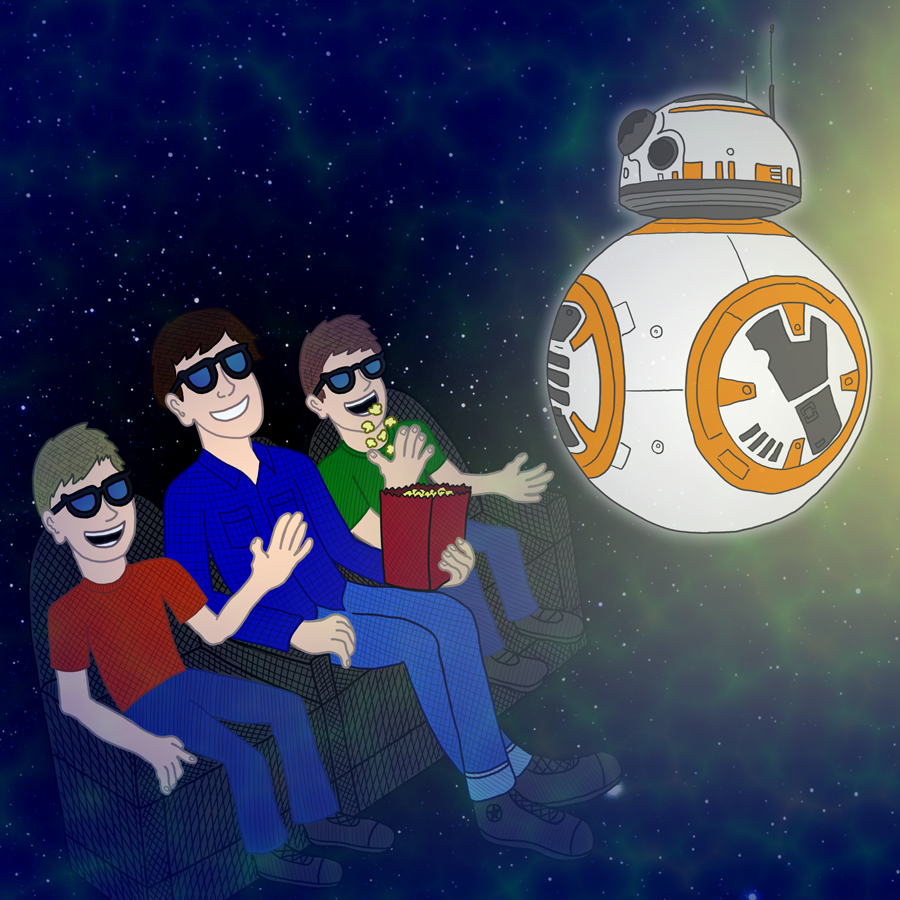A cumulative review of Jay & Silent Bob Reboot (2019)

I had the great fortune to score a golden ticket to the first stop of the Jay & Silent Bob Reboot Roadshow in Asbury Park, NJ, close enough to the birthplace of Kevin Smith’s cinematic universe.
To say that I enjoyed the Jay and Silent Bob Reboot is something of an understatement, it truly and honestly changed my idea of what art can be.
Now for context, I’m a pretty big Kevin Smith fan, so you can add however many grains of salt you wish, but do please hear me out on the unique mark Smith has left on the medium of film, regardless of what you think of his message.
Being a 15 year old comic book fanboy in 1996 meant that I was on an ineluctable collision course with VHS copies of Clerks & Mallrats. These were cultural touchstones aimed straight at my forehead, and when they hit I did indeed become a bit obsessed. Enough so that I began poking around on this new communication tool called the internet, and ended up on the View Askew Message Board, where there was this whole community of people that were into this stuff too. Not only that but people who actually worked on the movies were there too, even the writer/director himself. I once asked him if he thought Warner Brothers would have let him keep all the casual swearing in his Superman Lives script, he replied that he didn’t know. A silly, almost substanceless exchange, but under the surface it was a paradigm shift of epic proportions, for the first time ever, the TV talked back to me.
Something that has become more clear with 25 years of hindsight is the folk hero nature of Kevin Smith’s appeal. He’s this suburban legend who risked all and somehow won. He escaped the soul crushing drudgery of the daily grind with his DIY outsider art. And for me, the 15 year old from Delaware, 10 minutes outside of NJ, he was the local boy making good. Not only that, but he was encouraging everyone else to make good as well.
I remember reading the script for Dogma before Chasing Amy even came out, and almost immediately starting my own script afterwards, because it seemed so fun, and accessible, and just why the hell not?
When I was 16 I tried to drive to Red Bank to go to Jay and Silent Bob’s Secret Stash in my 72 Cutlass Supreme, with MapQuest directions printed off the internet, but I got crazy lost and ended up in NYC, a proper teenaged misadventure. I wouldn’t make it to Red Bank until 4 years later for one of the Vulgarthon Film Festivals in 2000. As the giant crowd shuffled into the theater Kevin Smith was there to greet us all with a hand shake, it was pretty cool. At the end of each film there was a Q & A session populated by cast and crew. Clerks is a good enough movie on it’s own, but to then add the experience of sitting in a room with the people who made it and ask them how they got the cat to shit on cue? Kino-Pravda!
Around this time a new facet of Silent Bob’s talents began to emerge, his gift of gab. Smith can talk a great game, as heard on his movies’ commentary tracks, the “Evening With” stand up specials, and then especially his podcasts. His unique capacity for candor make his yarn spinning especially captivating and illuminating. Even if he’s just bullshitting half the time, it’s the kind of manure that helps the creative imagination grow. I don’t know if he even knows it, but the dude is basically a free art school professor, elucidating with ease how the sausage gets made, from soup to nuts. (You could go farther and fare worse than simply following Smith’s optimistic ‘fortune favors the bold’ approach to creativity.)
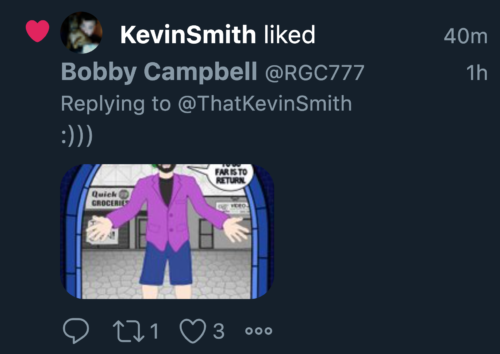 The podcasts he made before, during, and after the filming of Red State constitute a free master class in DIY media production, distribution, and marketing. I was so invested in the behind-the-scenes narrative of the movie that I made it my bees wax to attend the premiere at Radio City Music Hall. Again, the movie is good enough on its own, but to get to watch it within the same 4 walls as John Goodman? I enjoyed myself well enough that evening to bring it up to Kevin during a reddit AMA. Further casual points of contact with an artist who has made intimacy his currency.
The podcasts he made before, during, and after the filming of Red State constitute a free master class in DIY media production, distribution, and marketing. I was so invested in the behind-the-scenes narrative of the movie that I made it my bees wax to attend the premiere at Radio City Music Hall. Again, the movie is good enough on its own, but to get to watch it within the same 4 walls as John Goodman? I enjoyed myself well enough that evening to bring it up to Kevin during a reddit AMA. Further casual points of contact with an artist who has made intimacy his currency.
All of which brings us to Asbury Park, and the first public showing of Jay & Silent Bob Reboot. A film that completely eschews the conventional wisdom that suggests Smith should be reaching beyond his audience, and instead sincerely embraces its own cult film niche, successfully recreating the halcyon joy of the Jersey Trilogy.
It’s all pure fan service, of course, but artfully & thoughtfully so. Though it probably doesn’t hurt that Kevin & Jay are there, in person, telling stories, answering questions, 4 walling their own movie, coming to a theatre near you. Indie film incarnate.
My older brother, who surprised me with tickets to this event, also sprung for a meet & greet after the movie. So after the movie we queue up in a long winding line leading around to the backstage area. When I walk through the proverbial proscenium curtain Kevin convincingly greets me as if I’m an old friend – “Hey man!” – which is after all, from my perspective, true in some sense, and he immediately wraps me up in a giant hug.
“It’s good to see you!” I say. “The movie was so so good” – “You really think so?” – “Absolutely!” And then Jay’s there too! “What’s up!?”
A photographer snaps a pic of us and I sort of stumble away, because it’s kind of like meeting Santa Claus & The Easter Bunny. These cartoon characters, who are also regular people, who are also local heroes. “Hey man, don’t leave me hanging!” Kevin says with outstretched arms. He gives me another hug before I shuffle on out.

As cliche as it is, Citizen Kane is one of my very favorite movies, and I don’t think it loses anything by being an unreachable artifact of a bygone era, in fact that’s probably a large part of its appeal, but it would be tough for me to deny that Jay & Silent Bob Reboot holds more personal significance for me.
And what better thing for art to possess than great personal significance?
As our media landscape continues to slide into DIY / user generated niches, I would hope that more and more people get their own Kevin Smiths, and more and more people get to be Kevin Smiths. Art as a means of personal communication and expression seems much more significant to me than monolithic masterworks. Like R.U. Sirius says, “in the future everyone will be famous to 15 people.”
SNOOGANS :)))








 In late November 2007, upon catching a news story on the radio about the tiles, I began to poke around a bit on the internet for further information on the subject. I’d satisfied my curiosity w/ only just a few brief blurbs, when I inadvertently knocked over my copy of Joseph Campbell’s “The Hero With A Thousand Faces.” I picked up the book, and but of course, it had opened to a page wherein the word “Toynbee” shone out like some kinda clownish beacon.
In late November 2007, upon catching a news story on the radio about the tiles, I began to poke around a bit on the internet for further information on the subject. I’d satisfied my curiosity w/ only just a few brief blurbs, when I inadvertently knocked over my copy of Joseph Campbell’s “The Hero With A Thousand Faces.” I picked up the book, and but of course, it had opened to a page wherein the word “Toynbee” shone out like some kinda clownish beacon.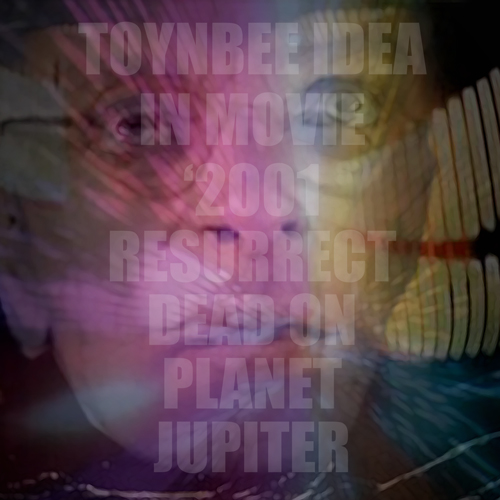 I felt obliged to dig at least a little bit deeper, and in so doing I turned up a video of a St. Louis local news segment, which features a man with a blue beard discussing Toynbee Tiles. And well, it just so happens that I know a fella w/ a blue beard…
I felt obliged to dig at least a little bit deeper, and in so doing I turned up a video of a St. Louis local news segment, which features a man with a blue beard discussing Toynbee Tiles. And well, it just so happens that I know a fella w/ a blue beard… Having eagerly reported for duty an hour early, I then went to enjoy a coffee at the Penrose Diner, and while reading my well worn edition of Marshall McLuhan’s “Understanding Media”, happened upon the following passages:
Having eagerly reported for duty an hour early, I then went to enjoy a coffee at the Penrose Diner, and while reading my well worn edition of Marshall McLuhan’s “Understanding Media”, happened upon the following passages:


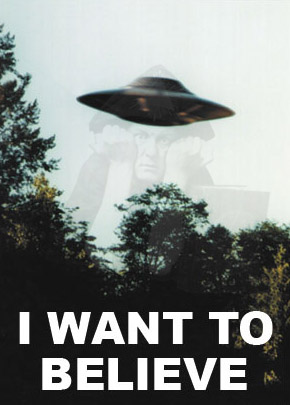
 None of which is to say that UFOs aren’t real! Because of course they are, but the quantum leap in logic from unidentified flying objects to alien spacecrafts is something of a recurring curiosity. Regular as rain, someone with governmental bona fides comes out and confirms the existence of “UFOs”, which creates the pretext for a semantic hallucination, because “UFO” is a term that has become synonymous with alien spacecraft, but the presented evidence only ever shows unidentified flying objects. Amongst the confusion of this linguistic shell game highly questionable heresy creeps towards unearned legitimacy. My intent here isn’t to disprove the existence of alien spacecrafts, but rather to point out an age-old epistemological problem, as the Buddha might say, “sabda is not pramina,” testimony is not experience.
None of which is to say that UFOs aren’t real! Because of course they are, but the quantum leap in logic from unidentified flying objects to alien spacecrafts is something of a recurring curiosity. Regular as rain, someone with governmental bona fides comes out and confirms the existence of “UFOs”, which creates the pretext for a semantic hallucination, because “UFO” is a term that has become synonymous with alien spacecraft, but the presented evidence only ever shows unidentified flying objects. Amongst the confusion of this linguistic shell game highly questionable heresy creeps towards unearned legitimacy. My intent here isn’t to disprove the existence of alien spacecrafts, but rather to point out an age-old epistemological problem, as the Buddha might say, “sabda is not pramina,” testimony is not experience.
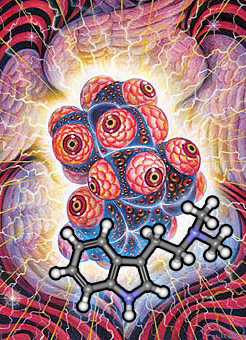
 A particularly neat thing about working with
A particularly neat thing about working with 


